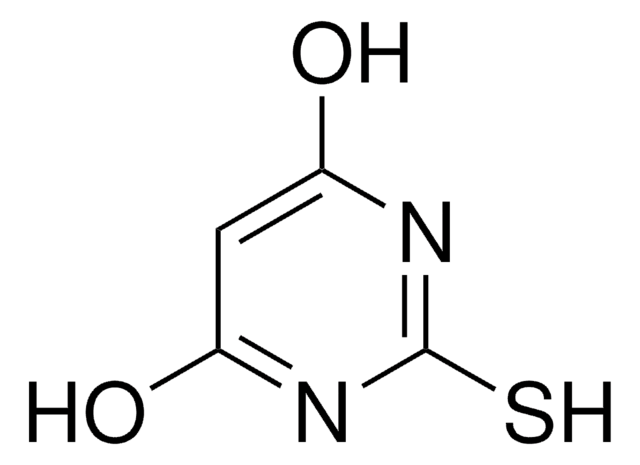31267
Acido tricloroacetico
PESTANAL®, analytical standard
Sinonimo/i:
TCA
About This Item
Prodotti consigliati
Grado
analytical standard
Densità del vapore
<1 (vs air)
Tensione di vapore
1 mmHg ( 51 °C)
Nome Commerciale
PESTANAL®
Durata
limited shelf life, expiry date on the label
tecniche
HPLC: suitable
gas chromatography (GC): suitable
Indice di rifrazione
n20/D 1.62 (lit.)
P. eboll.
196 °C (lit.)
Punto di fusione
54-58 °C (lit.)
Solubilità
soluble 81.7 g/L at 20 °C (completely)
Densità
1.62 g/mL at 25 °C (lit.)
applicazioni
agriculture
cleaning products
cosmetics
environmental
food and beverages
personal care
Formato
neat
Stringa SMILE
OC(=O)C(Cl)(Cl)Cl
InChI
1S/C2HCl3O2/c3-2(4,5)1(6)7/h(H,6,7)
YNJBWRMUSHSURL-UHFFFAOYSA-N
Cerchi prodotti simili? Visita Guida al confronto tra prodotti
Applicazioni
Note legali
Avvertenze
Danger
Indicazioni di pericolo
Classi di pericolo
Aquatic Acute 1 - Aquatic Chronic 1 - Eye Dam. 1 - Skin Corr. 1A
Codice della classe di stoccaggio
8B - Non-combustible corrosive hazardous materials
Classe di pericolosità dell'acqua (WGK)
WGK 2
Punto d’infiammabilità (°F)
>235.4 °F - closed cup
Punto d’infiammabilità (°C)
> 113 °C - closed cup
Dispositivi di protezione individuale
Eyeshields, Faceshields, Gloves, type P3 (EN 143) respirator cartridges
Scegli una delle versioni più recenti:
Possiedi già questo prodotto?
I documenti relativi ai prodotti acquistati recentemente sono disponibili nell’Archivio dei documenti.
Il team dei nostri ricercatori vanta grande esperienza in tutte le aree della ricerca quali Life Science, scienza dei materiali, sintesi chimica, cromatografia, discipline analitiche, ecc..
Contatta l'Assistenza Tecnica.






